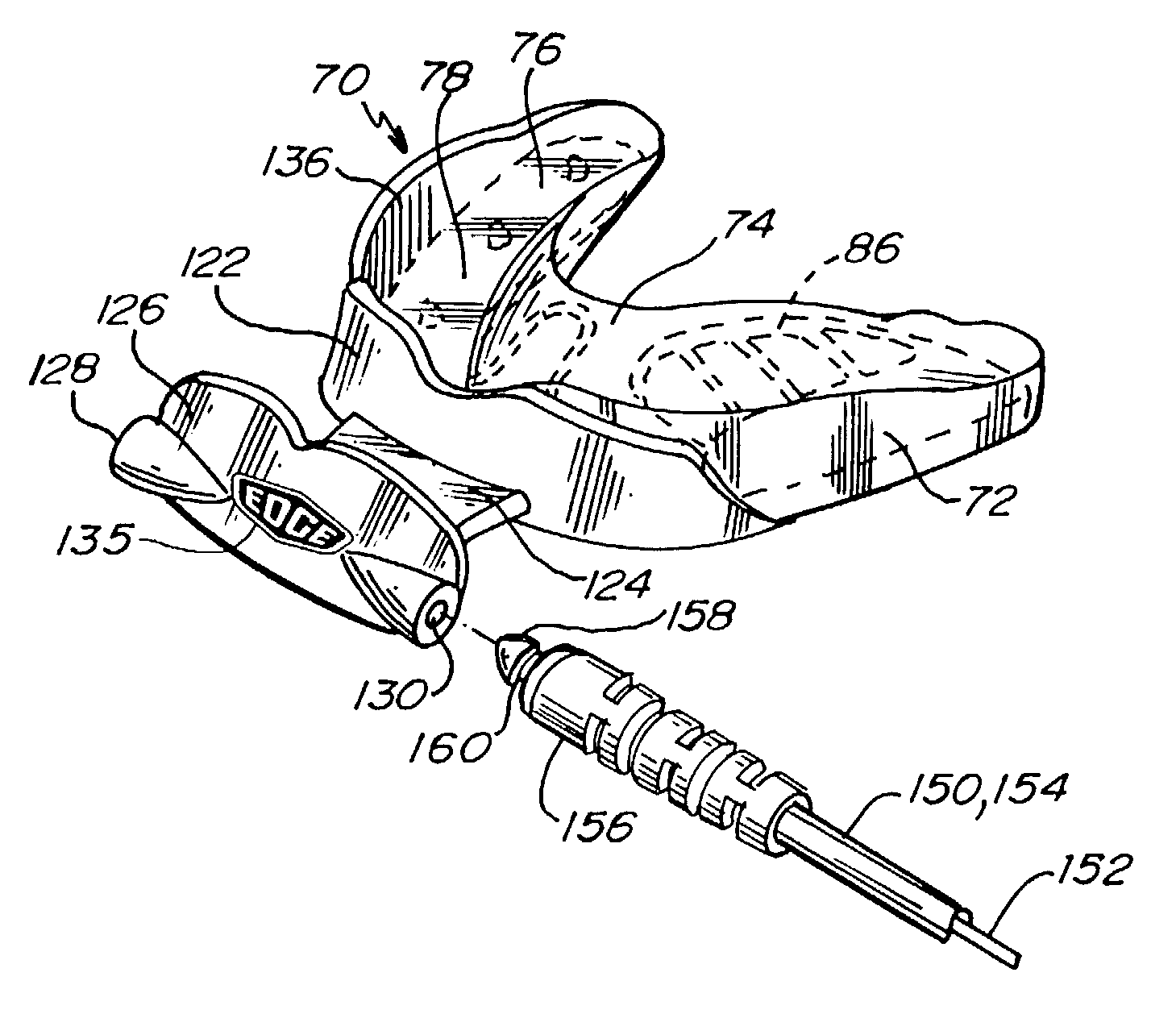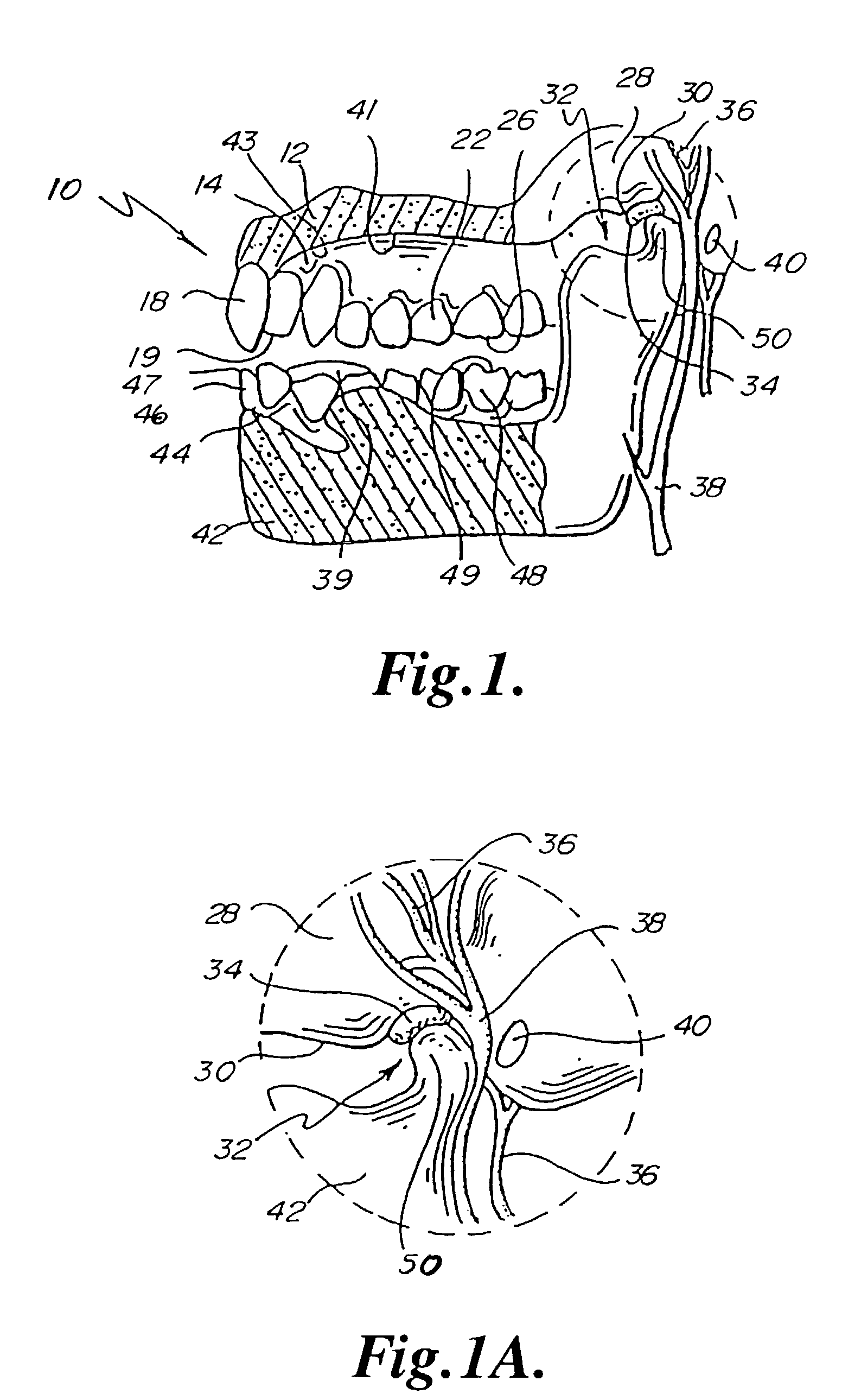Composite performance enhancing tethered mouthguard
a technology of composite materials and tethers, which is applied in the field of performance enhancement and force absorption of composite mouthguards, can solve the problems of clogging ears, headaches, and cumbersome tethers, and achieve the effects of reducing the risk of delamination or separation of materials, and reducing the risk of concussion and dizziness
- Summary
- Abstract
- Description
- Claims
- Application Information
AI Technical Summary
Benefits of technology
Problems solved by technology
Method used
Image
Examples
Embodiment Construction
[0039]To understand the structural features and benefits of the dental appliance or mouthguard 70 of the present invention, some anatomy will first be described. Referring to FIGS. 1 and 1A, the user or athlete has a mouth 10 generally comprised of a rigid upper jaw 12 and a movable lower jaw 42 which are movably connected at the temporomandibular joint (TMJ) 32 and 50.
[0040]More specifically, the rigid upper jaw 12 has gum tissue 14 within mouth 10. Gum tissue 14, as well as the bone thereunder, supports anterior teeth (incisors and canines) 18 which have incisal or biting surfaces 19. The gum tissues 14 and the bone thereunder also support posterior teeth (molars and bicuspids) 22 which have cusps or biting surfaces 26.
[0041]Referring to one side of the human head, the temporal bone 28 is located upwardly and rearwardly of the upper jaw 12 and is in the range of 1 / 16th to 1 / 32nd inch thick. The articular eminence 30 forms the beginning of the fossae 32 or the socket of the temporo...
PUM
 Login to View More
Login to View More Abstract
Description
Claims
Application Information
 Login to View More
Login to View More - R&D
- Intellectual Property
- Life Sciences
- Materials
- Tech Scout
- Unparalleled Data Quality
- Higher Quality Content
- 60% Fewer Hallucinations
Browse by: Latest US Patents, China's latest patents, Technical Efficacy Thesaurus, Application Domain, Technology Topic, Popular Technical Reports.
© 2025 PatSnap. All rights reserved.Legal|Privacy policy|Modern Slavery Act Transparency Statement|Sitemap|About US| Contact US: help@patsnap.com



